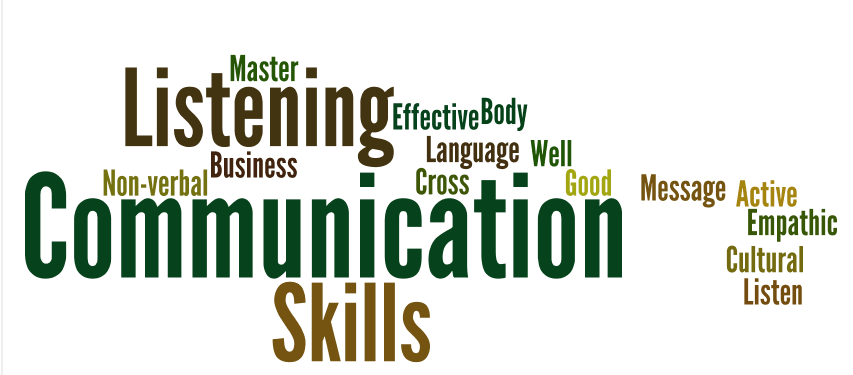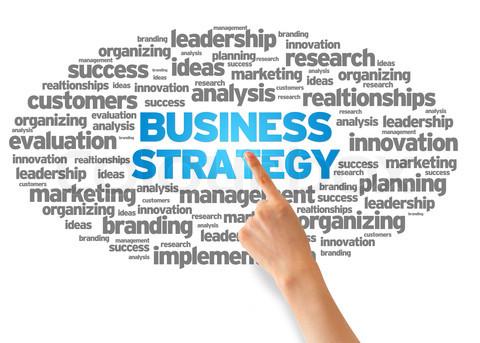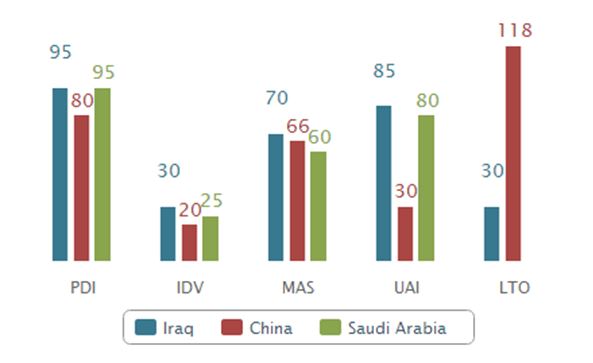Leadership Assignment
Leadership: It is the process in which an individual leads a group of people or an organization by influencing them with the same notion to attain a common goal. We can also define leadership as defined by Theo Haimann as “Leadership is the process by which an executive imaginatively directs, guides and influences the work of others in attaining specified goals”. The leader is at center of the group’s power structure and responsible for keeping the group together along with infusing life into it so that it can move towards its goal. Inside each every one of us there is a leader who is waiting for an opportunity to come out and lead it in an effective manner. A good leader is fully aware of his/her strengths and weaknesses. I would like to list down some of my strengths related to my personal leadership effectiveness –
- Optimistic: I am highly optimistic person. I have the ability to think positive and look after the bright side of everything. It’s really important for the leader to lift the people of his/her group to the clouds instead of dragging them into mud. I seek out the positives in people and help them overcome their feelings of self-doubt which helps them keep motivated.
- Confidence: Highly effective leaders know deep down inside their minds that they and their team can accomplish the work they set themselves for. Confident makes you motivated and helps you strive even in difficult times. In a group if the leader is confident about something, his followers will be too. I also possess this trait of confidence in me. I am always optimistic and confident about any work that I have to do because it helps me complete the work easily.
- Self-Assessment: I believe I know my areas of strengths and weaknesses and it helps me to self-assess myself which is really important. A Leader should always be good self-judging himself and also others so that at every point of time, the leader has an idea that whatever he is doing is not wrong which would allow delegating to others who have those abilities.
- Decisive: Basic duty of a leader is to make decisions. I personally believe I have that decision making quality in me. I am not afraid to make decisions and quick calls when circumstances require it. Once I make a decision I stick with it unless there is some strong particular compelling reasons for me to change it.
- Supporting my Team/Group: I have worked in various teams as a leader. Be it in school or during my work term, I have always supported my team/group by making it safe to take risks, speak up or to tell the truth. Supporting your group by making this kind of environment always facilitate the group’s progress towards attaining the desired aim or goal.
Some of weaknesses include procrastination due to which sometimes I pay a lot attention to non-urgent work rather than concentrating on the urgent work. Also the compulsiveness to complete one task while having the stress of all the other tasks at the same time has led me to think unkindly about the person or the circumstance. Sometimes I get too much occupied with work that I even don’t think about my personal life. This is due to the inability to say “No” to people who ask me for any kind of help or work. I also have this problem of overthinking sometimes. I care way too much about things than normally required.
Too leverage my strengths and to develop my weaknesses the best thing can be asking people around for the input and then deciding- what areas to work on. Asking people to give genuine feedback on what they feel about my abilities and weaknesses will help move forward in the right direction. I have always listened carefully whenever someone has given me feedback and I try to work on my weaknesses. I have to stop being procrastinating which will allow me to take on urgent tasks rather than taking on something I like. This will help me complete those urgent tasks first and then proceed on to other tasks. To do this I will make a task plan stating which tasks need first attention. The issue of compulsiveness can be solved by managing equally between the tasks. Even if I have multiple tasks to work on, I will not limit myself onto solving one task first; rather I will aim on completing each of them side by side which will eliminate any kind of compulsion and the effects after. Talking about overthinking, the best way to overcome this is self-satisfaction. I usually don’t get satisfied easily with anything which creates this problem of overthinking and over looking into matters which do not even require that attention. I believe all of the action plan discussed above will help me overcome my weaknesses. To grip on my strengths I will keep on working in the same leadership style and manner. To improve and gain new skills I will set specific life goals with timelines. The goals can be designed by moving backwards in time of your life to the present month. After setting up goals and deadlines next thing is to formulate the action plan so I can commit to that and it will help me achieve those skills. I will keep on educating and improving myself in every possible way. The person who thinks he is an expert in something, has a lot more to learn. Learning never stops. I aim to be receptive to others perceptions and information I get from people I meet daily. I am keeping my self-updated with any kinds of development in my field. As John F Kennedy once said “Leadership and learning are indispensable to each other.” So always learn and grow.
There are different barriers that can come up while implementing the plan we discussed above. We always fear of overstepping our boundaries and think that the response to our initiatives will be “Mind your own business”. Some of us are even afraid to get evaluated by others because of uncertainty about what people think of us. There are challenges that come from different sources, some being external and some internal (ctb.ku.edu). External challenges usually include public criticism, financial issues, and hostility from powerful forces etc. whereas internal challenges come up from within the (leader) person. Internal challenges can include emotional intelligence which is defined as the ability to understand and manage one’s own emotions. If someone has a high degree of emotional intelligence then that personal know what their emotions are, what their emotions mean to themselves and to others, and how their emotions can affect themselves and others. To be an effective leader one should has strong understanding of his/her emotions so that emotions does not create any kind of barrier while leading a group. There are some other internal factors like impatience, lack of decision making ability etc. that can result in hampering the growth of the leader.

Values guide human actions and they are really important in understanding leadership as they explain the focus and directions of people’s actions (Katherine D, 2015). They may vary with culture but some of the values are fundamental like honesty, credibility etc. which fits all human beings uniformly. Demonstrating the values through appropriate actions enables leaders to build network and connection with their followers which helps in building the bond of trust and commitment. To satisfy followers, a leader has to connect with them and then values come into the play as values are the primary way in which that connection is made. Our values certainly influence every decision we make in our daily life. As values play such an important role, so it becomes critical to recognize, understand and evaluate these values in sound decision making. Some of the personal values driven by leadership are:
- Perception of Decision: The personal value associated with a decision is the perception of considering it as successful or ineffective. As an example let’s consider a leader who thinks more about the people and environment will consider a decision to invest in community and environment in contrast to the leader who thinks about company’s annual profit will make decision that favors statistical performance. The thing that matters is value associated with the decision making.
- Loyalty and Trust: If someone is loyal and trustworthy then this personal value of that person helps to remain committed and loyal with anyone that persons works for. If a group is made of members who are loyal to each other and trustworthy then that group is effective in terms of achieving the final common goal. I personally think being loyal and trustworthy has helped me get many lead roles in the organization I work. Being someone whom your management can trust can surely help that person attain leadership roles.
- Vision stimulation and inspiration: If a leader has a vision setup in his mind regarding the goal of his team/group, the personal value is inspiration and motivation to others. In order to get employees passionate about what they are doing, leaders have to possess great energy so that they can spark excitement and achieve results. (Katherine D, 2015). According to Peter Ernest, CEO of Values Journey, “when a truly values-based leader ensures that his organization has an engaging process for the people to explore their personal values, as well as their teams’ and the organizations’ values, there are benefits on many levels”.
To understand the behavior of people there are few variables such as attitudes, motivations, personality, skills, knowledge, confidence, perceptions etc. The importance of a value system is that once internalized it becomes, a standard or criterion for guiding one’s action. Thus the study of leaders’ values is extremely important to the study of leadership (Bruno F.C, 2006). Personal values impact leaders in at least two ways one out of which is it acts as a perceptual filter that shapes decisions and behavior, and personal values act as a driver of leader’s methods of creating these values.
Heroic Management versus Engaged Leadership
After reading the article by Mintzberg, I have a clear understanding of the differentiation between a heroic manager and an engaged manager. Let’s first start off talking about heroic managers. To manage is to make decisions and allocate resources and it often involves analyzing and calculating. In heroic management, the managers are considered important people which are quite apart from all those who develop the products or deliver services. As these managers go higher up, they become more important part of the organization and at the “top” of the organization is the chief executive. They have a clear, deliberate and bold strategy and the chief is the one who takes the dramatic steps that drive up the share price. Everyone else implements the same. But this is the time when the problem comes because although chief embraces change, most of the other people resist it. This is the reason to favor contractors or consultants over the insiders. The rewards for increase in the share price go largely to leader and the risk taker who pays no penalty for drops in the share price. According to a recent survey, “Executive Excess 2001,” conducted during the 1990s by the Institute of Policy Studies, CEO pay rose by 570%, while profits rose by 114%, and average worker pay rose by 37%, barely ahead of inflation (Anderson S. 2001). Real leadership is often more quiet than heroic. It is about teamwork and long term goals, which builds an organization slowly and collectively.
Let us talk about Engaging Management and leadership. According to Mintzberg, in this type of leadership managers are important to the extent that they help other people be important as well. Managers understand the importance of other employees in an organization and they create engaged teams. An organization is not a vertical hierarchy rather an interacting network where effective leaders work throughout and not sit on the top. People who develop the product or deliver the services solve little problems using strategies that later merge into new initiatives. In this type of management formulation and implementation go side by side and cannot be separated. The managers involved in this type of leadership style believe in bringing out the energy that exists naturally within the people thus making it more engaging and inspiring. According to a study conducted by Gallup, just 35% of the US managers are themselves engaged while 51% are not engaged. The not engaged group costs US $77 billion to $96 billion every year through their impact on those they manage (Gallup, 2015).
I work for a multinational oil and gas company. My organization has both types of managers and the management style. I will talk about my department and the managers I deal with. My manager use engaged type of management. They provide intensive feedback and training to new employees and proactively manage the onboarding process making a positive first impression. They communicate with their staff in a clear manner. Many of us prefer on having informal conversation with our supervisors regarding performance reviews or feedback which not only helps us keep involved with the team but also helps in performing the job better and easily. The engaged managers know that they are held accountable for the performance management of their employees. When employees are not meeting expectations, these managers listen to their employees and make suggestions from the vantage point of their professional capacity that will help them overcome their problems and difficulties (Insightlink.com, 2015). Being a part of the organization and led by such managers gives me chance to be effective during my work and it keeps me motivated and confident. Engaged employees are builders of an organization.
The two types of leadership styles impact on employee morale and performance. When an employee joins an organization he/she wants to know the role and their expectations which are desired by the supervisor/manager. It helps them meet their objectives and exceed them. Engaged management with the employees help them perform at consistently high rates. This also helps them use their talents and skills in the right direction. Hence the employees work with passion and drive innovation to move the organization forward (Govleaders.org, 2015). This different leadership styles sometimes also lead to participative approaches during projects. In this the employees working on a project in a team take part in decision making which gives them a chance to develop their leadership skills as well. Managers also have to challenge employees within their areas of talent and help them to acquire the required skills and knowledge which later can be turned to their strengths.
The strategic leadership of an ethical behavior in business practices cannot be ignored. To be considered a leader in ethical business practices I believe my organization can follow the points below –
- The goals of creating and sustaining ethical climates within which employees act ethically as a matter of routine should be included in the strategic leadership responsibility for business executives.
- Secondary stakeholders may be viewed with more urgency by executives than primary stakeholders. The government can shut down a business in a matter of hours; it takes much longer for disgruntled customers to have such a drastic effect (Terry Thomas, 2004).
- Special attention should be paid in finding and developing the best people as it involves taking ethics and character into account in the selection process.
- There should be a conversation across all levels of the business where the basics of value creation, stakeholder principles and societal expectations were routinely discussed and debated.
I think organizations should start establishing new standards and best practices that everyone can enjoy, learn from and improve along the way. The new workplace is less about the business defining the individual and more about the individual defining the business. The point noted above should also be taken into account towards an ethical behavior in the business practices.
Organizational Ethics
“The Corporation” movie revolves around the notion of limited liability and corporate social responsibility. It also shows the development of corporation as a legal entity and is an attempt to assess the “personality” of the corporate person. The film is based on the argument that – since the corporation has been given the rights of a legal person, we can evaluate what type of person it is. I work for an oil and gas corporation. My organization has its own culture where everything related to health, safety, environment and production growth is taken care of. The corporation movie revolves around the concept of corporate social responsibility and I will discuss what my organization has done for the same. My organization is committed to partnering with community members and other stakeholders in the areas it operates. A long term trust is built by sharing information, consulting with stakeholders about business decisions and working collaboratively to understand their needs and expectations. Now limited liability is the type on investment in which the investor/partner of any organization cannot lose more than invested amount. Even my organization has the same notion in which there is limited liability benefit that is given to all the organization’s partners or investors. So they are not afraid to suffer with any kind of loss.
Code of ethics is a kind of policy statement or a properly framed code in which the organization forms and issues a set of guidelines to its employees to help them conduct their actions properly. My organization also has an integrity work guide stating its code of ethics. Some of them are:
- Respecting each other and Environment: As my organization deals with the production of oil and gas, special concern is given to the environmental safety. My organization believes in respecting its employees, stakeholders, customers and most importantly the environment. In respect of this, the organization ensures that emergency response capability is in place and is tested for all company operations and facilities. Everyone is open to different points of view and approaches while doing things and seek to understand and value each other’s perspectives.
- Confidentiality and Privacy: As any other organization, mine also respects confidentiality and safeguards intellectual property. Sensitive information outside of organization is shared only with authorized parties who have signed an appropriate confidentiality agreement.
- Accuracy: Ensuring accuracy and completeness of business records helps us make informed business decisions and allows us to meet our responsibilities to our stakeholders. There is proper disposal of business records according to policy and legal requirements; no undisclosed or unrecorded amount is maintained.
- Secure Work Environment: My organization believes in protecting the assets and maintaining a secure work environment. All the movement of company’s equipment, its materials and inventory is tracked and reported accordingly. The organization is responsible for the security of all its employees and workers.
- Avoiding Conflicts of Interests: Trust is important to every successful business relationship. To manage the conflicts of interests my organization discloses any situation that could be perceived as potential interest conflict.
- No Bribes: A direct or indirect offer of anything of value like money, gifts or advantage of any kind is prohibited. My organization complies with international anti-corruption laws even when bribery may appear to be an accepted part of local business practice. Reasonable steps are taken to avoid making indirect payments to government officials, other employees and also customers.
The code of ethics reflects about an organization and if there is any failure in code of ethics it means that there is a failure in leadership as well. An organization always tries to create and define a logical and defensible code of ethics but it’s not easy to cover all the possible scenarios. The process of identifying an ethical problem and defining the facts and resolving organizational, interpersonal and professional conflicts that arise are instrumental in giving organizations ethical leadership credibility. When a system fails to adequately address legitimate employee concerns whistleblowing may occur (ispub.com, 2015). Leaders and employees adhering to a code of ethics create an ethical organizational culture. When leaders have high ethical standards, it encourages workers in the organization to meet that same level. Ethical leadership also enhances the company’s reputation in the financial market and community (smallbusiness.chron, 2015).
Sometimes organizations face some challenges while shifting or enhancing the social responsibility. One main problem that usually comes up is growing consumer skepticism. Consumers now recognize that for many organizations, social responsibility is simply a public relations campaign in disguise. They are skeptical about the true motivation behind corporate social responsibility and are not easily convinced that a business is acting in the best interests of the community and environment (toolkit, 2015).
After filling the survey on code of ethics, I came to know about a noticeable fact that 51% of the people say their organization currently does not have a code of ethics. And 62% people lack of know-how which they feel to be a barrier in creating code of ethics. An implication for my role in my organization is to have an ethical behavior among workers in the organization that ensures that employees complete work with honesty and integrity. I use ethics to guide my behavior, also referring to the organization’s work guide that adheres to employee policies and rules while striving to meet the goals of the organization. Ethical employees also meet standards for quality in their work, which can enhance the company’s reputation and also helps in responsible development.
Summary
There is a conventional wisdom that management and leadership go hand in hand, that every manager is (or at least should be) a good leader, thus leadership in management has been taken up as a cause to be promoted, and leadership as a word has become a mantra chanted by all. One should understand his/her own strengths and weaknesses to become a successful leader. The strengths should be changed to skills and the weaknesses should become strengths. I have learnt that to be a successful leader, one should have the ability to delegate and it’s also important to trust your team with sane vision and goal which will eventually help to take progress to the next stage. I have also learnt to be optimistic, confident and decisive. Personal values and ethics guide leadership and human actions and they are really important in understanding leadership as they explain the focus and directions of people’s actions. Talking about Heroic and Engaged management I learnt that a proper blend of both kinds of leadership and management style can help in getting out the best from the employees. They have an impact on employee’s morale and performance; implementing these styles properly can not only help employees give their best but also help them exceed their objectives. Heroic leaders set an example of discipline whereas the engaged keeps the morals of the team high and keeps the team members cohesive. While working in a team, one should listen to the ideas or point of views of the other team members. Although different arguments might lead towards conflict, but a real team leader listens to all the members unbiased and then makes a final decision which is favorable for the whole team. I have learnt that emotions also control the style of leadership. That is why it is worthy to keep a happy environment and a positive attitude in the team as well as in personal life.
Talking about the code of ethics, it is really important for every business as it guides all managerial decisions and is common framework upon which all decisions are taken. It also helps in creating a cohesive understanding within an organization and also with stakeholders and customers. Code of ethics is used by many companies to prohibit any inappropriate employee behavior which compromises company’s policies and standards. Code of ethics can help employees understand what inappropriate actions are and what they are accountable for. Not only this, code of ethics build trust between the organization and its employees. Let’s now discuss the barriers towards more corporate socially responsible behavior. The common one being Lack of stakeholder awareness which is due to the lack of ethical awareness that keeps the stakeholders uninformed about CSR implementation. Also sometimes there are financial constraints due to lack of financial support from the upper level management. Due to this organizational managers find that implementing CSR does not fit their budget. Sometimes company culture also becomes the barrier as some organizations rely on old company culture and are resistant to new strategies (Duarte F, 2015).
References
Ctb.ku.edu,. ‘Chapter 13. Orienting Ideas In Leadership Section 6. Recognizing The Challenges Of Leadership Main Section Community Tool Box’. N.p., 2015. Web. Sept. 2015
Katherine D. (2015). Values Based Leadership – Valparaiso University’. N.p., 2015. Web. Sept. 2015.
Bruno F.C (2006). Personal Values and Leadership Effectiveness.
Anderson, J. Cavanagh, C. Hartman and B. Leondar-Wright, “Executive Excess 2001” (Washington, D.C: Institute for Policy Studies, 2001), 1
Gallup (2015). Gallup, Inc. ‘Only 35% Of U.S. Managers Are Engaged In Their Jobs’. Gallup.com. N.p., 2015. Web. 2015.
Insightlink.com, ‘The Nine Habits Of Highly Engaged Managers Insightlink Communications’. N.p., 2015. Web. 2015.
Duarte, F.P.; Rahman, S. Perceptions of corporate social responsibility by Bangladeshi managers: An exploratory study. Int. Rev. Bus. Res. Pap. 2010, 6, 119–136.





